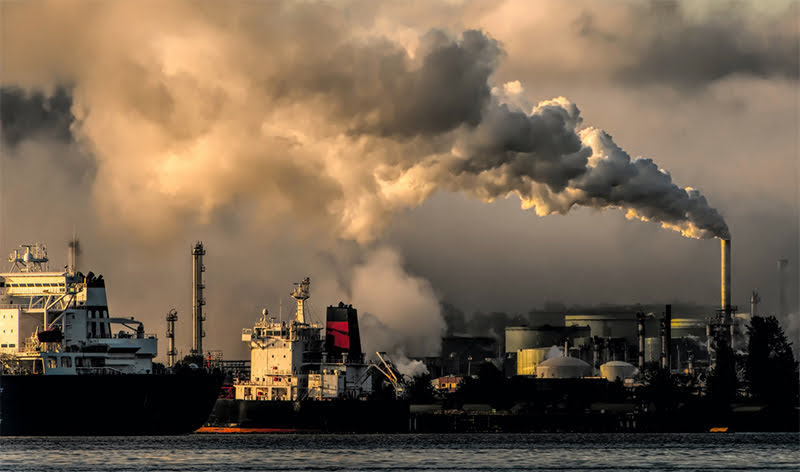The contamination of the air, water, or soil with substances that harm living things is known as air pollution. It occurs when a variety of environmental components are put at risk by the introduction or release of toxic substances. Although natural events like volcanic eruptions can cause pollution, human activities now account for the majority of it. Significant contributors to air pollution include the growing number of vehicles on the road and the ongoing discharge of industrial waste into the air or water.
Air Pollution
According to the World Health Organization, polluted air affects over 90% of the world’s population. Everyone is affected by this statistic, but children, the elderly, and people with respiratory conditions like asthma are especially at risk. When looking at the underlying causes of air pollution, it becomes clear that humans are largely to blame. Industrialization has contributed to the rise in pollution levels while also bringing both advantages and disadvantages to society and the environment. Before effective control measures can be implemented, it is necessary to have a comprehensive understanding of this problem’s complexity.
Also Check:-
What is Air Pollution?
Air pollution is the release of pollutants into the air that are harmful to human health and the environment as a whole. Nearly seven million people worldwide die each year as a result of indoor and outdoor air pollution, according to the World Health Organization (WHO). The vast majority of people as of now inhale air that surpasses the WHO’s rule limits for contaminations, with those living in low-and center pay nations experiencing the most. The Clean Air Act, enacted in 1970, grants authorization to the United States The Environmental Protection Agency (EPA) regulates the emissions of these harmful air pollutants to protect public health.
Effects of Air Pollution
Air pollution is presently the world’s fourth-biggest gamble factor for early passing. According to the 2020 State of Global Health, outdoor air pollution exposures were associated with 4.5 million deaths in 2019 and indoor air pollution was responsible for another 2.2 million. Air report, which summarizes the most recent scientific understanding of air pollution around the world. China and India, two of the world’s most populous nations, continue to bear the highest disease burdens.
Hazardous Air Pollutants
Particles of chemicals, soil, smoke, dust, or allergens that are carried in the air make up soot, a type of particulate matter. Smog and soot both come from the same place. According to Walke, “both come from cars and trucks, factories, power plants, incinerators, engines, and basically anything that burns fossil fuels like coal, gasoline, or natural gas.”
Also Check:-
Greenhouse Gases
Even though these climate pollutants do not have the same negative effects on human health as other air pollutants like smog or dangerous chemicals, they are still harmful. Climate change’s hallmarks include rising sea levels, more extreme weather, heat-related deaths, and an increase in the spread of infectious diseases because greenhouse gases trap the earth’s heat in the atmosphere. Methane accounted for more than 11% of the nation’s total greenhouse gas emissions in 2021, while carbon dioxide contributed roughly 79 percent.
Pollen & Mold
Despite the fact that they are not regulated, they could be considered air pollution. According to Kim Knowlton, a professor of environmental health sciences at Columbia University and a former NRDC scientist, “when homes, schools, or businesses get water damage, mold can grow and produce allergenic airborne pollutants.” “Some molds can even produce toxins that would be dangerous for anyone to inhale, and mold exposure can precipitate asthma attacks or allergic responses.”
Also Check:-
Final Words
We take about 23,000 unfocused breaths each day, engaging in the straightforward act of breathing. Breathing is a constant part of our lives, whether we are at home, at work, or on the daily commute in our cars. However, breathing is frequently overlooked due to its invisible nature, despite its crucial importance. Since we can’t see the air around us, it’s hard to tell whether gases or particles are present.
